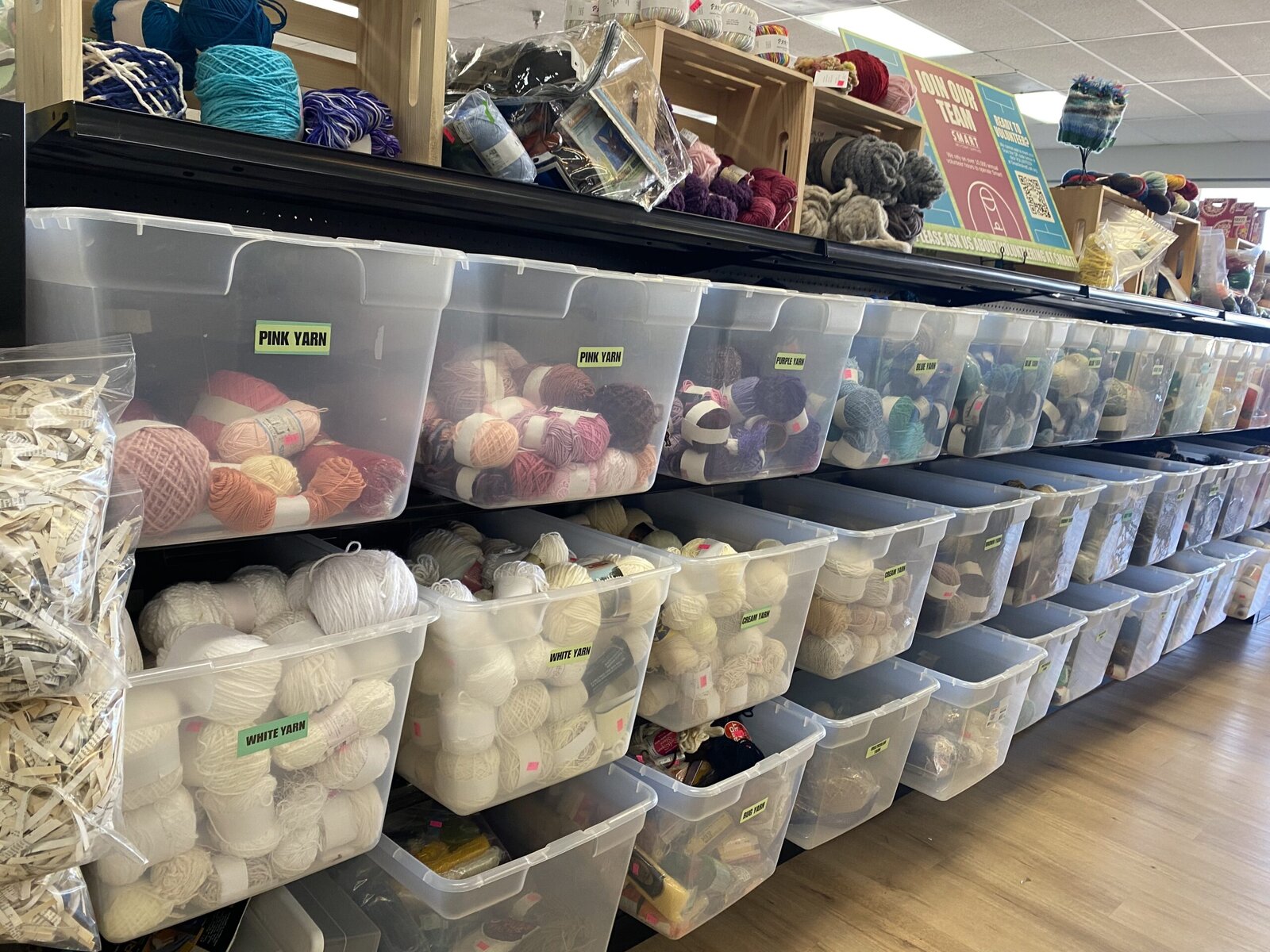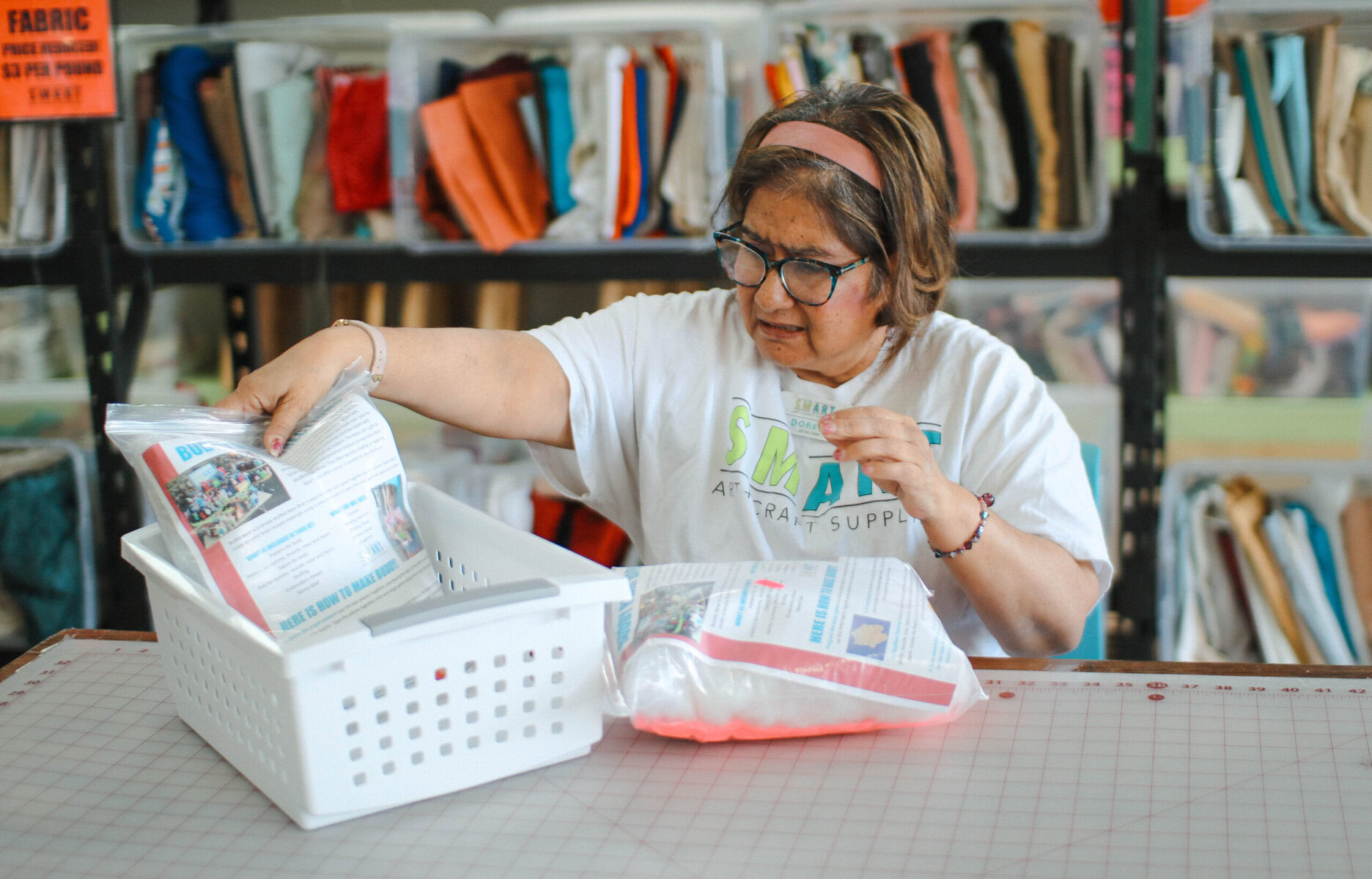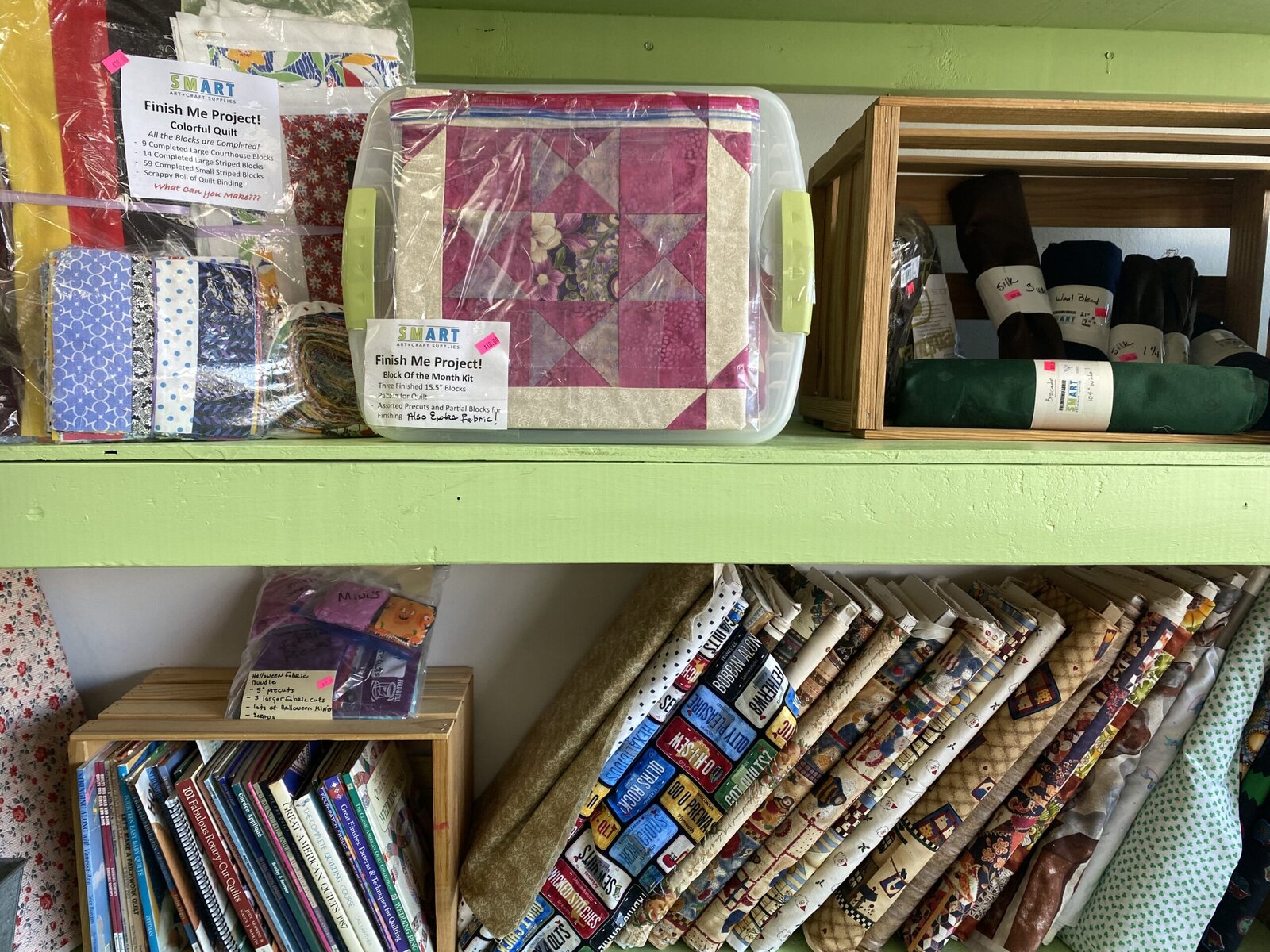On an early spring day, Brandon Brownell greeted shoppers as they came into Smart Art and Craft Supplies in northeast Nashville.
The shop is a crafter’s paradise. Tables in the front are loaded with weaving supplies, like cones of caramel and black yarn. Shelves in the back overflow with bolts of patterned fabric. Artists can pick up paints, pencils and paper of all different weights.
But, as Brownell explained to new customers, Smart is different from the typical craft store: Everything on its shelves has been donated. The shop is what is known as a creative reuse center. These crafting thrift stores keep leftover and unwanted art supplies out of landfills, and instead get them into the hands of other creators at affordable prices.
Smart combines that model with another mission. Many of the employees and volunteers who run the shop are adults with disabilities. Over the last decade, the organization has diverted more than one million pounds of art and craft materials from landfills, while providing over 37,400 hours of job coaching, volunteering and employment for adults with disabilities.
“We are leveraging art and leveraging creativity, really, to impact a population that needs our support,” says Kyle Graden, the shop’s senior operations manager.
Creatively repurposing art and craft materials has a long history. But an early pioneer of this type of creative reuse center emerged in San Francisco in the 1970s. Artists seeking supplies for community education projects partnered with local businesses to pick up materials that were otherwise destined for the trash heap. The center, called SCRAP, is still around, and diverts an estimated 250 tons of materials each year.
Similar concepts sprung up across the country, born out of necessity and opportunity. In 1998, a group of teachers in Portland, Oregon — tired of throwing out leftover classroom supplies each spring only to have to restock the next fall — set up a space where local educators could participate in a free exchange. Within a couple years, the space evolved into a hub for artists and crafters. Now called SCRAP Creative Reuse (unrelated to SCRAP in San Francisco), it comprises a network of four centers — in Portland; Ann Arbor, Michigan; Baltimore; and Richmond, Virginia — each collecting everything from leftover paints to used bottle corks that can be used for artistic purposes.

“Instead of it going into the waste stream, people are donating to us, and then other artists can come in and reuse those materials,” says Kimberly Maruska, the network’s executive director.
One of the impacts of this model, Maruska says, is that it encourages an ethos of reducing waste. “Creative reuse is really about reuse and second life,” she says. “We’re literally taking what it was and just making it into something else.”
In Nashville, Smart started in 2014 as an effort to create a social enterprise linked to Progress Inc., a nonprofit that supports adults with disabilities. With a strong arts community, the city was a natural fit for the creative reuse model, Graden says, and quickly gained a following.
The center sees a steady flow of donations from community members, including crafters sorting out their personal stashes, neighbors unloading unusual items, even donations by mail. Smart has also built up connections with local craft businesses. Some collect donations of leftover materials from their customers to donate to Smart; other businesses give excess or deadstock materials, like a recent delivery of hand-dyed raw silk yarn. Sometimes, Smart receives the contents of an entire sewing room that belonged to someone who has died — including their unfinished projects. When those come in, Smart volunteers package up the materials and the instructions, and sell the project as a kit, passing it along for another crafter to complete.
Weighed down by negative news?
Our smart, bright, weekly newsletter is the uplift you’ve been looking for.
Those volunteers are one of the strengths of the creative reuse model, according to Graden. While general second-hand stores may carry crafting materials, creative reuse centers are specialized. Smart has a roster of 120 volunteers, boasting expertise in everything from quilting to crochet to stained glass.
“That kind of gives us, I think, an edge,” he says. Volunteers often help customers work through problems in their projects. That has helped to build the customer base. “They can come in here and really have their questions answered.”

Dale Waymack is one of those volunteers. A self-described lifelong upcycler, Waymack discovered Smart as a customer not long after it opened. The shop had a supply of fabric swatch books, which Waymack would use to make purses. She soon started volunteering, and now draws on her knowledge of textiles to sort through the reams of donations that come in, often finding high-quality and vintage fabrics, like linen and silk.
One recent donation included an old military-issue wool blanket, green with a label with the former owner’s name. Within a day of it going on the floor, someone bought the heavy blanket with plans to turn it into a winter coat.
“It’s going to have another life,” Waymack says. “It’s not going to be folded in a trunk somewhere.”
Waymack has seen everything from century-old, crumbling Shakespeare volumes to a crystal chandelier come into the shop, then get repurposed as supplies for creative shoppers. But as much as Waymack enjoys sorting through treasures, she says her favorite part of working at Smart is the environment. The shop bustles with staff members and volunteers, some who have disabilities, and some who don’t.

Brownell, who works the cash register, is autistic. About seven years ago, he had been looking for an opportunity to volunteer or work when a friend told him about Smart. “It was hard for me to find a place, because some places don’t accept people with disabilities,” he says.
He soon got hired and now works in just about every aspect of the shop, from sorting through yarn donations to running the cash register. Brownell is a crafter himself; he learned to crochet from his grandmother. Now he’s particularly into painting and weaving washcloths on a loom. Smart felt like a natural fit for him from the beginning, he says. “It’s right in my corner.”
Smart tries to blur the boundaries between staff and volunteers with and without disabilities, Graden says. “Our staff and our volunteers are producing really high quality work that they care about and that I think really trickles down to everything we do.”
One of the benefits of the creative reuse center model is that it can be replicated and adapted, says Maruska, of SCRAP Creative Reuse. In addition to running four centers in different parts of the country, the Portland-headquartered organization often offers support for other centers that are getting started, she says. Each different organization can find its own niche in its community.
But there are challenges, too. Because the stores’ stocks rely on donations, supply can be hard to manage. Some products are more popular at certain times of year — like yarn in winter — so keeping shelves stocked to meet demand can be tricky.
The profit margins tend to be very slim, Maruska notes. The bulk of sales from creative reuse centers tend to be on small items, like partial skeins of yarn. As costs have gone up generally over the last few years, maintaining affordability of materials has been a challenge.
At this point, Graden says, Smart Art and Craft Supplies is well-established. The business makes enough money each year from customers walking through the door to cover its own expenses, and, on top of that, it’s able to contribute excess revenue to support the work of Progress Inc.
The impact goes beyond the reselling of art and craft materials, Graden says. Smart has become a hub for the community. Earlier this year, Brownell started leading workshops — one on beginner crochet, and the other on decoupage. For Brownell, the social element of working at Smart is one of the best parts.
“It made me feel like this is a home to me, and family to me,” he says.
The post The Shops Where Trash Becomes Crafters’ Treasure appeared first on Reasons to be Cheerful.




